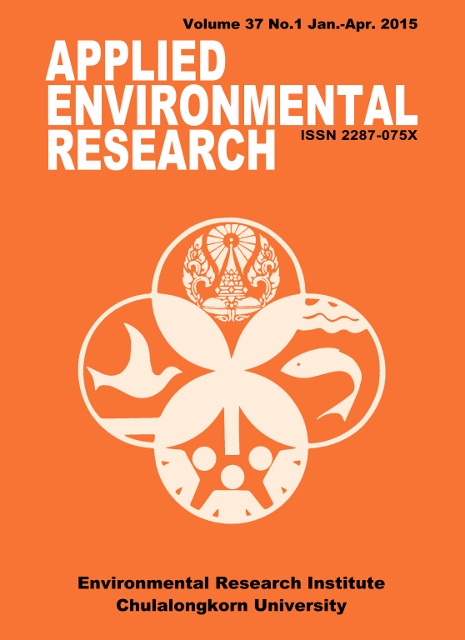A Study of Residual Cyanides and Potential Stabilities in Tailings Storage Facility of Gold Mining Operation
Main Article Content
Abstract
The study aimed to investigate residual cyanides and their potential stabilities in tailings from a gold processing plant deposited in the Tailings Storage Facility (TSF) of a gold mining site. For this purpose, several samples of tailings were taken from the recently abandoned TSF to a depth of 2.5 meters, representing 1 to 2 years old tailings. The samples were analyzed for pH, metals, residual cyanides, and Net Acid Generation Test (NAG test). The results showed that, in all samples, pH values were neutral to slightly alkaline. Fe concentrations were relatively high (22,800-35,000 mg kg-1) indicating that Fe can readily react with free cyanide (CN-) to form iron cyanide complexes (strong metal cyanide complexes). The residual cyanide concentration in tailings was found to be very low; free cyanide (CNFree), weak acid dissociable cyanide (CNWAD), strong acid dissociable cyanide (CNSAD) and total cyanide (CNT) were in the range of 0.16-0.64, 0.37-1.06, 1.96-3.89 and 2.33-4.95 mg kg-1, respectively. Cyanides in the tailings were predominantly strong metal cyanide complexes being more stable to dissociate. Total cyanide (CNT) concentration was quite low compared with Thailand’s environmental regulations for soil quality standards and were environmentally insignificant. The NAG test for all samples revealed that NAG pH was in the range of 5.02-6.10 and NAG was in the range of 0.08-0.31 kg H2SO4 t-1 indicating all samples have low or non-acid forming potentials. The findings indicated a potential to form a high proportion of strong metal cyanide complexes in the tailings, which is difficult to dissociate and release high toxic cyanide to the environment.
Article Details

This work is licensed under a Creative Commons Attribution-NonCommercial 4.0 International License.
Published articles are under the copyright of the Applied Environmental Research effective when the article is accepted for publication thus granting Applied Environmental Research all rights for the work so that both parties may be protected from the consequences of unauthorized use. Partially or totally publication of an article elsewhere is possible only after the consent from the editors.

